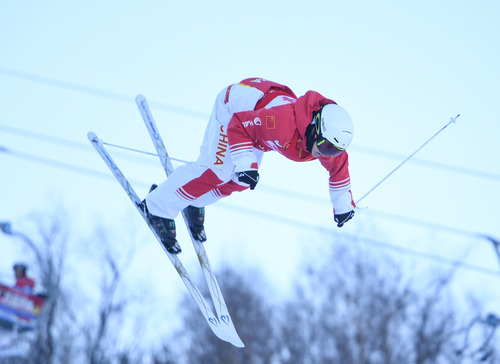CHANGCHUN, Feb. 19 (Xinhua) -- Winter resorts in China such as Harbin, Jilin and Zhangjiakou, all closed down local ski resorts from the end of January to present, as the country was going all out to contain the spread of the novel coronavirus disease (COVID-19).
The Chinese Lunar New Year public holiday, which was set at the period from January 25 to January 30 this year, used to be the peak period for tourists to visit the ski resorts. Due to the suspension of business, many ski resorts have missed this peak period of reception this year.
Suspension of business means loss of income from winter tourism projects such as skiing . "Since January 24, we have stopped the team reception business of ice and snow tourism," said Zhu Yanping, assistant to general manager of Global International Travel Agency Co., Ltd. in Jilin Province, northeast China.
"Our domestic tourists mainly come from Shanghai, Guangdong, Zhejiang, Beijing and other provinces, and foreign tourists mainly come from Europe and the United States," said Yan Shuai, head of the marketing department of Beidahu Ski Resort in Jilin Province, noting that the number of tourists it recepted this snow season is estimated at 300,000 only, as compared with 490,000 in the previous season.
Behind the "frozen period" of ski resorts in China, many potentials and advantages are emerging, which are expected to back them to pick up after the epidemic.
Firstly, most ski resorts get matured after years of operation. Huang Zhongrui, manager of the marketing department of Lake Songhua Resort, stated that in the past few years, the infrastructure of his resort has been well established. At present, Lake Songhua Resort can meet the needs of skiers with different skiing capabilities.
Secondly, the ski resorts have built complete supporting facilities and improved reception capacity. Wang Shitong, general manager of Changbaishan Luneng Resort, said that in 2019, his resort added more than 500 beds, breaking the bottleneck of insufficient reception capacity in the past.
Thirdly, willingness of Chinese domestic tourists to attend ice and snow activities increased. According to current estimates, from mid-November 2019 to the end of January 2020, the number of tourists at some ski resorts increased about 20 percent.
The fourth is the advantage of the cold climate in Northeast China. When the temperature rises in March and most ski resorts around the world are hard to operate, ski resorts in Northeast China can still provide ski services, which may attract many international tourists.
At the same time, China ski resorts are exploring the "two seasons operation" respectively in winter and summer. According to Yan Shuai, Beidahu Ski Resort will provide venues for quality development training in summer. The year-round operation also improved the risk resistance of many ski resorts. (Contributed by Guan Ziru; edited by Duan Jing, duanjing@xinhua.org)




 A single purchase
A single purchase









